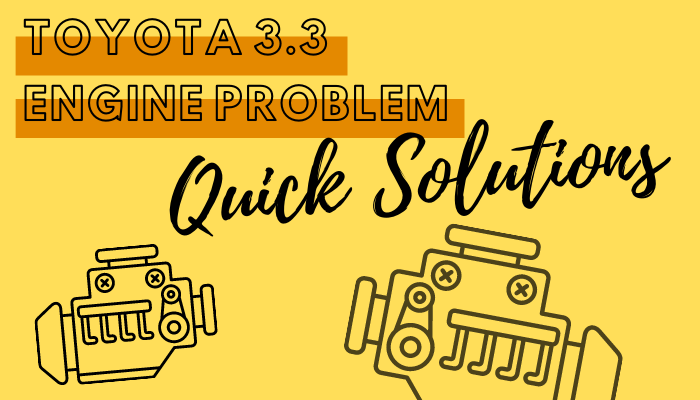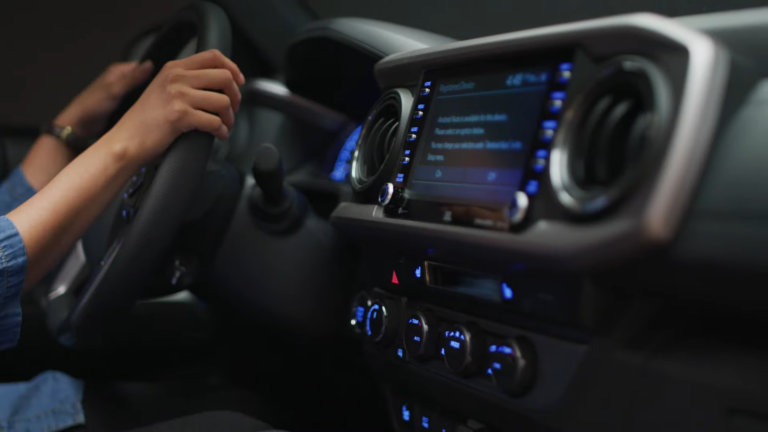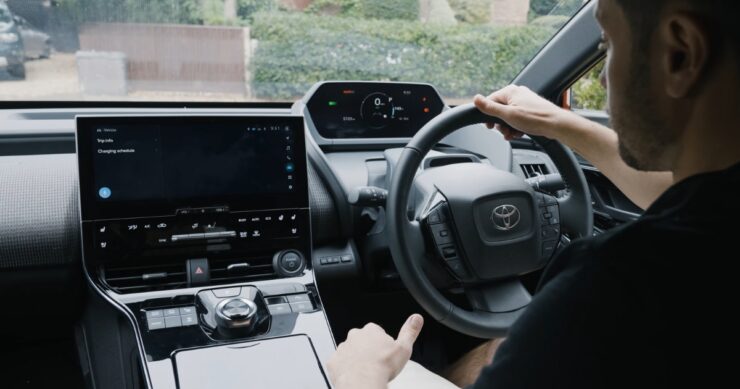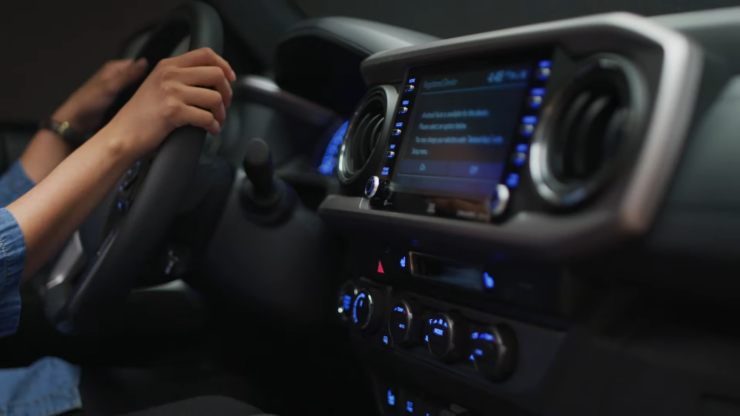Before you invest, make sure to learn about Toyota 3.3 engine problems & possible solutions. Thus, you can take care of your ride easily.
Owners need to know about Toyota 3.3 engine problems & possible solutions in advance. For instance, you will get the upper hand in rectifying minor glitches efficiently.
Thus, you get to save a considerable amount of money on frequent repairs. Before you open the 3.3 engine, it is essential to acknowledge it in detail.
In this article, you will get genuine information about the 3.3 engine and problems related to it. That said, you can also get to know the basic features of the Toyota 3.3 engine.
If you have a 2.7 engine, then our article on solutions and fixes for this engine might be helpful.
What is the Toyota 3.3 Engine?
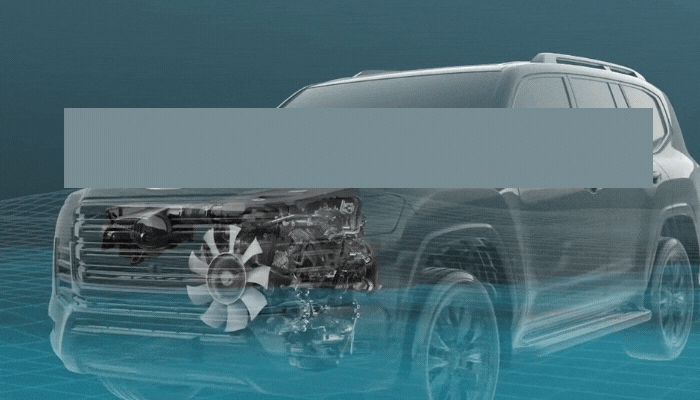
Back in 2002, Toyota introduced the 3MZ-FE engine. More specifically, Toyota introduced this engine to Solara, Lexus, Camry, and Highlander models.
You do not have to worry about Toyota 3.3 v6 reliability as the engine contains aluminum-cylinder heads. Each cylinder includes four valves and belt-driven overhead camshafts.
However, 3MZ-FE does not have hydraulic lifters or exhaust valves. On average, do check valve clearance after 70k miles.
Mainly, 3MZ-FE uses 12 holes in the form of a multiple-fuel injecting system. Contrarily to 1MZ’s aluminum alloy, 3MZ-FE’s manifold is produced from plastic.
For intake, Toyota uses the ACIS system. Usually, the process of fuel intake is directly dependent on the engine speed.
Also, air cleaning intake is controlled with the help of the two-stage control system.
Cylinder head and Toyota 3.3 v6 reliability
Toyota’s 3.3 v6 engine consists of cross-flow intake and pent-roof combustion chambers. A single timing belt is used to drive exhaust camshafts.
Secondly, each gear of exhaust and intake camshaft engages with each other. Generally, the camshaft journal has proper support around five places.
Most importantly, the camshaft journal is supported at the front of the cylinder head.
Irregular springs connect the intake and exhaust valves. These springs are made of unique spring carbon.
Similarly, they can follow the cam profile at different engine speeds. Furthermore, the intake and exhaust valves have diameters around 34 mm and 27.3 mm.
Check out the best floor mats for your Sienna!
Cylinder block Toyota 3.3 v6 reliability
As discussed above, 3MZ-FE has an aluminum block having a 60-degree bank angle. Likewise, this engine contains a V arrangement.
All of the cylinders in front of RH are numbered 1-3-5. On the other hand, the LH cylinders are numbered as 2-4-6, with a firing order of 3MZ-FE is 1-2-3-4-5-6.
For additional support, the engine consists of cylinder liners made of cast iron. The crankshaft contains oil holes in the center.
Full-floating pins are used in pistons and have one control ring.
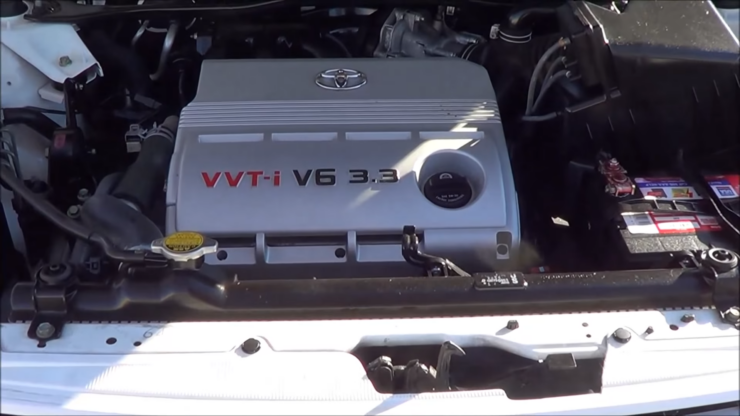
Features of Toyota 3.3 Engine – 3MZ-FE
- Years of production: 2002-2015
- Type of fuel used: Gasoline
- Fuel system: Multi-point fuel injection
- Configuration: V
- Total valves per cylinder: 4
- The total number of cylinders: 6
- Valvetrain layout: DOHC
- Displacement, cc: 3310cc
- Bore, mm: 92 mm
- Stroke, mm: 83 mm
- Compression ratio: 10.8: 1
- Oil change interval, mile: 70k on average
Few extra features of Toyota 3.3 v6 are listed below in detail.
01. Fuel-saving
Along with high horsepower, the 3.3 v6 has a commendable design. Now you get to save a great deal of fuel during long drives.
02. Overall balance
The 3.3 v6 is one of the best engines in the market. Meanwhile, this engine has 4.7 liters of engine capacity.
Additionally, a four-stroke combustion engine increases the pickup timing of the vehicle. Inside the crankshaft, nine semi-counter-weights and four bearings are placed.
Thus, they keep it in perfect balance, even at a high vibration.
03. High torque
V6 engines are known to generate high torque. Generally, Toyota’s 3.3 v6 engine generates a total of 325 to 350 Nm torque.
Get the best bull bar for your Tacoma!
Toyota 3.3 Engine Problems & Possible Solutions
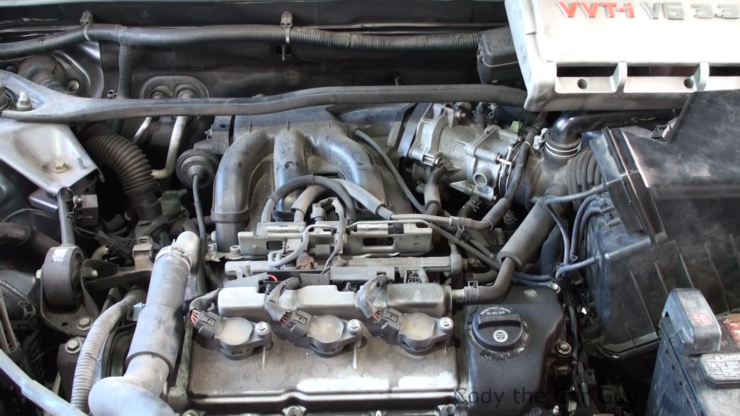
01. Oil Leakage
An excessive amount of oil leakage tends to corrode the piping system. Moreover, oil leakage also results in overheating of the engine. In the long run, your car’s engine might get completely damaged.
Replace piston rings
The piston costs about $200 to $300, depending on the car’s model. With that said, always take an expert’s service while replacing a piston.
Check the level of the oil.
Initially, make sure to check the level of oil in the engine. Proper oil level keeps the engine properly lubricated.
Do check the car’s oil manually instead of relying on the pressure monitor.
02. Malfunctioning of Cam Seal & Crank Seal pulley
Besides, you may also have to suffer from engine vibrations, transmitter damage, or alternator failure.
Replace the obsolete part
All in all, the life of the crank seal pulley depends on vehicle usage. Moreover, this part tends to become an ancient time.
You have to pay around $350 to $400 for the crank seal pulley. Meanwhile, labor might cost about $180.
03. Timing Belt Problem
Ticking noise from the engine and oil leakage are few causes of the faulty timing belt. Next, you may also have to deal with an engine misfire or dead engine.
Usually, the timing belt is made from high-quality rubber and contains nylon-enforced cords. With time, the nylon-enforced cable tends to become faulty or obsolete.
Replace the timing belt
As compared to the rest of the engine parts, the timing belt costs only $25 to $50. However, the cost of labor varies from $200 to $900.
To prevent your car from additional damage, you should replace the timing belt every 12 months.
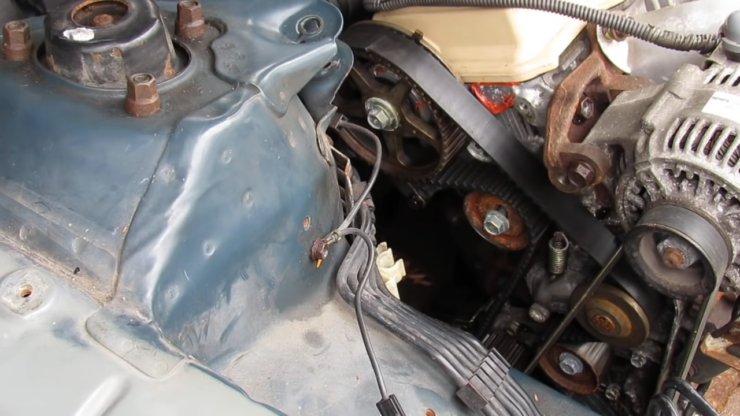
04. Coolant Water Pump Leak
Overheating of the engine and loose water pump’s axle occur due to leaking water pump.
Check whether the lid is shut tightly.
First things first, make sure that the lid of the water pump is tightened. At times the lid gets loose due to intense engine vibration and excessive heat.
Replace the water pump
You might get a water pump from $50 to $200. Additionally, the labor cost varies from $50 to $1000.
If you want to remove Toyota 3.3 v6 engine timing belt, then the replacement cost will increase. More specifically, the size of the water pump is directly proportional to the engine size.
05. Coolant Plate Leak
With time and rigorous usage, coolant plates start to leak inside the car’s engine. Thereby, it results in the accumulation of coolant in the engine valley.
Specifically, too much coolant is the leading cause of leakage. Old coolant breaks down in the piping of the engine, resulting in a highly corrosive reaction.
Add more water
If the coolant level has gone low, you can even add distilled water to the coolant tank. That said, this process is cheap and helps the engine to cool down effectively.
You can add 100 to 150 ml of cold distilled water to the tank.
Replace the coolant
Initially, you are required to replace the coolant plate after 100,000 miles. After this, replace the coolant plate every 50,000 miles.
Back in 2004, you might have to use 60% coolant and 40% water. At present, premixed coolants are available in the market. You can buy a coolant for just $85.
06. Radiator Leak
Coolants can also leak from the hose fittings of a radiator. If the hose is too brittle or soft, then it might cause leakage of the coolant. At times overheated radiator can lead to short-circuiting.
As a result, there is a possibility that the car’s engine can set on fire.
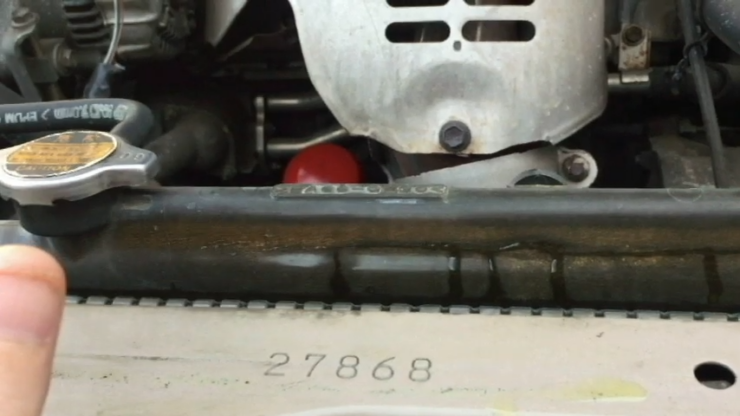
Take proactive measures
- Check the coolant level regularly.
- Undertake a pressure test occasionally
- Keep an eye on the temperature gauge of your car.
These steps are cost-effective as you do not have to spend a dime to undertake them.
Repair the leakage
You can undertake minor radiator repair with the help of a sealer or electrical duct tape. For example, you can seal the brittle hose with duct or electrical tapes.
Meanwhile, make sure to cover any cracks or punctures in the radiator with a sealer.
Additionally, you can even pressure test the cooling system. At the time of repair, get rid of any air pockets, leading to overheating.
07. Knock Sensor Problem
Knock sensors are ideally located at the engine’s head. Because of knock sensors, the ECU receives electrical signals.
Faulty knock sensors lead to lack of power, engine hesitation, and rough idle. Few times, faulty knock sensors also lead to lousy mileage, loud sounds, and warning lights.
Replace knock sensors
A bad knock sensor can even damage the catalytic convertor. You might have to spend a hefty amount of money.
Thereby it is sensible to change the knock sensor after every six to eight months. You can buy a knock sensor from $200 to $250, excluding the labor charges.
Always hire a professional to install the knock sensor as it requires technical knowledge.
08. Overheating of the Engine
Chiefly the car’s engine may get permanently damaged due to overheating.
In addition to this, overheating also leads to several other minor problems. For example, you may have to deal with the blockage of coolant circulation and dashboard caveats.
Take proactive measures
- Check the radiator from time to time.
- Replace the old wiring as they get corroded
- Do not place an excessive amount of coolant.
- Duly monitor the engine oil.
09. Increased Oil Consumption
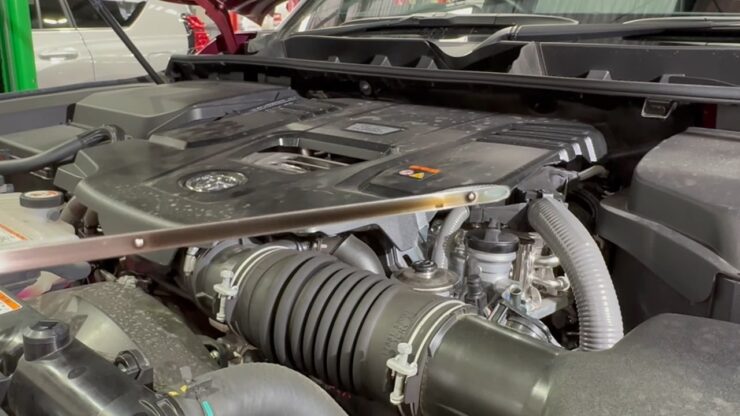
To be specific, 3MZ-FE tends to consume more oil when compared to the 3.5 v6 engine. Some of the owners have also complained about engine stalling and smoky tailpipe.
Do not over accelerate.
Indeed it is a cost-effective solution to the problem. Just drive the vehicle around 24 to 30 miles per hour inside the city.
Rebuild the engine
At times several parts of the engine might become obsolete. Thereby, it would help if you rebuilt them instead of replacing the engine.
When compared to replacement, engine rebuilt is cheaper. You may have to spend $2000 to $4000 during the process.
Engine replacement
You have to replace the engine under the following conditions.
- If the engine stops working altogether.
- In case the problem continues to exist for an extended time interval.
Engine replacement requires an expert’s attention, for it is a complex process. You might have to spend around $3000 to $7000, including engine parts and labor.
Be sure to get the most efficient battery for your car!
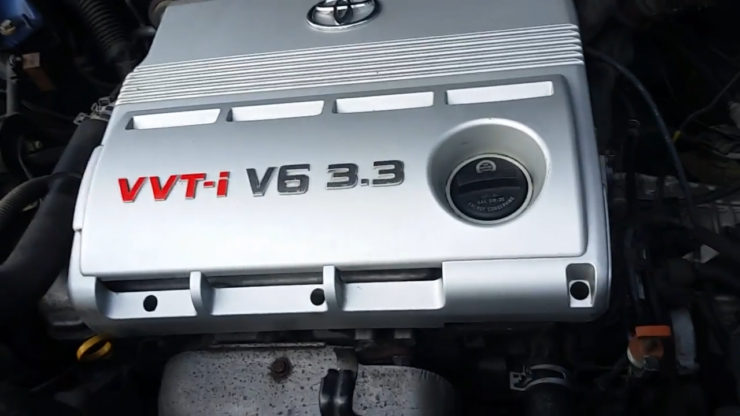
Pros and Cons of 3MZ-FE Toyota 3.3L Engine
Pros
- Produces high power
- Multiple-point fuel injection
- Cools down easily
- Made up of aluminum
Cons
- High oil consumption
- Transmission failure
Use our recommended rock sliders to ensure pure safety!
FAQs
Why Your Toyota isn’t Starting?
Sometimes, Toyota 3.3 v6 engine backfires or does not start at all.
There are several reasons for such a glitch. You need to check all the electrical connections, fuel, ignition switch, coils, etc.; there is also a possibility that the starter connection is not spinning correctly.
If so, then do replace it immediately.
What are the causes of a random misfire of the engine?
A random misfire of the engine can be caused by a variety of issues, including:
- Faulty ignition components: This includes spark plugs, ignition coils, or spark plug wires that are worn, damaged or not functioning properly.
- Fuel system problems: A clogged fuel filter, fuel pump malfunction, or an issue with fuel injectors can cause a misfire.
- Air intake issues: If the engine is not receiving enough air, it can cause a misfire. This can be due to a clogged air filter or a malfunctioning mass airflow sensor.
- Vacuum leaks: A vacuum leak in the engine can cause a misfire, as it can disrupt the air-to-fuel ratio.
- Engine timing issues: If the timing belt or chain is worn, stretched, or broken, it can cause the engine to misfire.
- Mechanical problems: Engine problems such as worn-out bearings, damaged piston rings, or a damaged cylinder head can cause a misfire.
- Electrical problems: Faulty sensors, wiring issues, or a malfunctioning engine control module (ECM) can cause a misfire.
What are the causes of CMP circuit malfunctioning?
CMP (Camshaft Position Sensor) circuit malfunctioning can occur due to various reasons. Some of the common causes are:
- Wiring Issues: CMP circuit malfunctioning can occur due to damaged, loose, or corroded wires in the circuit. This can cause a disruption in the communication between the sensor and the engine control module (ECM).
- Faulty CMP Sensor: A faulty CMP sensor can also cause circuit malfunctioning. This can occur due to sensor wear and tear over time or damage caused by debris or extreme temperatures.
- ECM Issues: A malfunctioning ECM can also cause issues with the CMP circuit. This can occur due to software glitches or hardware failure.
- Timing Belt Issues: If the timing belt is not properly aligned or has slipped, it can cause the CMP sensor to malfunction.
- Faulty Crankshaft Position Sensor: A faulty crankshaft position sensor can cause the CMP circuit to malfunction as the two sensors work together to provide information to the ECM.
What to do when you get code P0505?
Usually, Code P0505 triggers when the ECM does not receive data from the ISC system. Markedly, ISC stands for Ideal Speed Control.
Engine malfunction that triggers P0505 code are:
- Failure of IAC unit
- External damage to the IAC unit
- Short-circuiting of the IAC unit
How should you rectify high or low sensor voltage?
Either high or low sensor voltage cause malfunctioning of Toyota’s engine. Thereby, the accelerator pedal does not respond properly.
To correct such malfunctioning, check whether the throttle position sensor is working perfectly or not. Furthermore, you should also check the circuiting of ECM.
How to Start the Engine with a Remote?
- Initially, touch the lock button on the remote.
- Make sure to re-touch the lock button within 1 second.
- Finally, hold on to the lock button for more than 3 seconds.
What Does the Code P0100 Mean?
The trouble code P0100 indicates that there is a malfunction in the Mass Air Flow (MAF) circuit of the vehicle’s engine. The MAF sensor measures the amount of air entering the engine and sends this information to the engine control module (ECM). The ECM then uses this data to adjust the amount of fuel delivered to the engine for optimal performance.
If the MAF sensor is not sending a signal to the ECM, or the signal is outside of the expected range, it can trigger the P0100 code. This can result in a variety of issues with the vehicle’s performance, including rough idling, reduced fuel efficiency, and even stalling.
Common causes of the P0100 code include a faulty MAF sensor, a damaged or corroded wiring harness in the MAF circuit, or a malfunctioning ECM. It is important to address the underlying cause of the P0100 code promptly to prevent further damage to the engine and to ensure the vehicle operates at peak performance.
What Does the Code P0125 Suggest?
The code P0125 is used to denote that the temperature of the coolant is low. Thereby, the engine might suffer technical problems or damage if used for a long time.
Right after starting the engine, the ECM monitors the temperature of the coolant. If you have added coolant recently, then make sure that the thermometer is working correctly.
Likewise, it would help if you also double-checked the working of the sensor.
What are Codes P0301, P0302, P0303, P0304, P0305, and P0306?
These codes refer to the misfire detection in cylinders 1, 2, 3, 4, 5, and 6. You need to check the spark plugs of the respective cylinders.
Secondly, check whether the cylinder exhaust is burnt or not. Next, make sure that the vehicle has proper fuel in the tank.
Finally, you can even check the O2 sensor and coil pack of the respective cylinder.
What should you do while receiving the P0335 code?
Mainly, the code P0335 occurs when the ECM does not detect the crankshaft position. Occasionally, the low battery charge may also trigger this code.
A few other possible causes are
- Damaged signal plate
- Bad crankshaft sensor
- Poor electrical connectivity
Why should you rectify code P1520 immediately?
Code P1520 indicates a malfunction in the Variable Camshaft Timing (VCT) circuit of the engine. If this code is not rectified immediately, it can lead to severe engine problems and potential safety hazards.
When the VCT circuit is malfunctioning, the engine’s timing system may not function properly. This can result in poor engine performance, reduced fuel efficiency, and even engine damage in the long term. Additionally, if the VCT system is not functioning correctly, it can lead to misfires, which can cause safety issues while driving.
Therefore, it is important to diagnose and rectify the issue as soon as possible to avoid any potential risks and maintain the optimal performance of your engine. If you experience any symptoms associated with code P1520, such as rough idling, reduced power, or poor acceleration, it is recommended to take your vehicle to a professional mechanic for diagnosis and repair.
Causes that may trigger this code are
- Loose connection of stoplight switch
- Fault in the stoplight
What to do if Bank 1 has a bad O2 sensor?
The bad oxygen sensor is one of the highly reported Toyota 3.3 engine problems. More importantly, this code signifies that the engine system is too lean.
You are required to undertake the following measures:
- Thoroughly clean the lines and MAF system.
- Periodically change the fuel and air filter.
- Inspect PCV hoses and vacuum
- Make sure that the intake manifold is not leaking.
Are there any issues with 3.3 v6 you need to be aware of?
As compared to 3.5, it is hard to change the spark plug of the 3.3 v6 engine. You need to remove several components beforehand. If you are a beginner, then do hire expert repairers for the process.
Final Verdict
You need to acknowledge Toyota 3.3 engine problems & possible solutions in advance.
Thereby, you can take care of the ride in an effective manner. As mentioned before, Toyota’s 3.3 v6 engines are well-known for the craftsmanship.
Nevertheless, you are expected to take duly care of it. Make sure to get familiar with the engine codes that are mentioned above.
These codes will give you an upper hand in increasing the engine life.
Related Posts:
- Toyota 3.0 v6 Engine Problems & Possible Easy…
- Toyota 2.4 Engine Problems & Easy Solutions - Keep…
- Toyota 4.6 Engine Problems in 2024 & Easy Solutions
- Toyota 3.5 V6 Engine Problems And Effective…
- Toyota 4.7 V8 Problems & Simple Solutions for 2024 -…
- Toyota 3.4 Engine Problems & Effective Solutions for 2024

